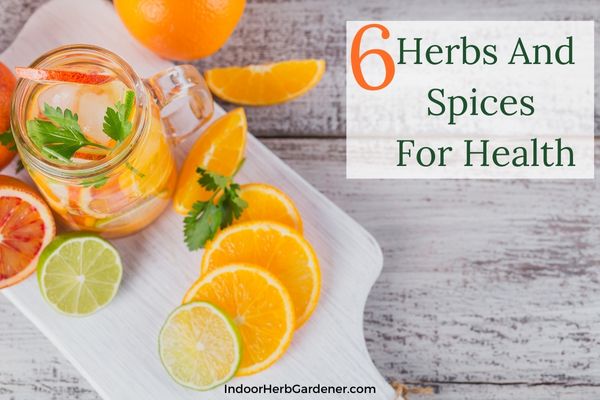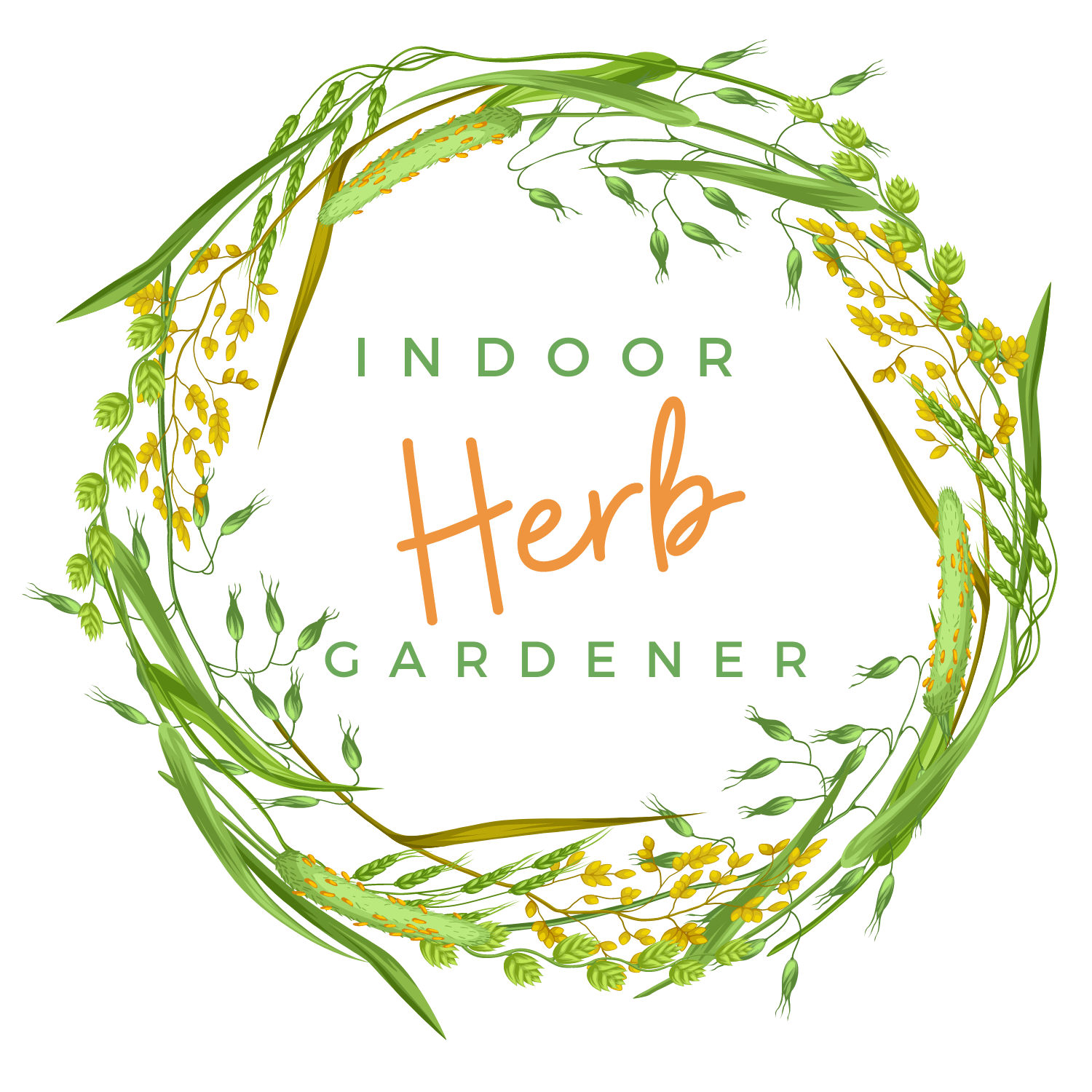Hey! By the way… IndoorHerbGardener is reader-supported. When you buy through links on our site, we may earn an affiliate commission and as an Amazon affiliate, we earn from qualifying purchases. Thanks in advance for your support!

One reason people don’t stick with a healthy lifestyle is they feel the taste of the same old meals gets monotonous. Often, the problem is that people don’t quite know how to add variety to their dishes, instead they just make what they know.
Read on to learn my best tips for creating new and exciting dishes and for adding pizazz using herbs and spices to the old favorites your love.
Health Benefits Of Herbs
All herbs and spices are vegan as they originate from plants, including flowers, seeds, fruits, leaves, roots, and barks.
First, let’s talk a little bit about the quality of herbs and spices. Besides being low calorie flavor powerhouses, fresh herbs provide distinct health benefits and some even have healing powers.
Many herbs and spices contain antibacterial and antiviral properties. Many are also high in trace minerals and B-vitamins. They contain antioxidants that help prevent disease and improve wellness; here are just a few examples.
Basil
Basil is a very flavorful and diverse herb (typically used in Italian dishes) that can be added to many dishes and recipes. Basil has anti-inflammatory and antiviral properties and is believed to help prevent osteoarthritis. Fresh basil can be used in salads, soups, stews, sauces sprinkled over eggs, and steamed vegetables.
Dill Weed And Seed
Dill has a fresh and unique flavor, and potent antibacterial properties. It helps to settle upset stomachs and queasiness. Fresh, uncooked dill is best for health and flavor. A salad with tomatoes, cucumbers, onion slices, fresh dill, and an oil and vinegar drizzle is an old Russian favorite and tastes great!
Cayenne Pepper
Cayenne pepper is used medically to increase circulation, and as a cream for joint pain, such as that related to arthritis conditions. Cayenne also revs metabolism, not a lot, but every little bit helps, right? 😉
Cayenne adds a nutty, smoky flavor to food and of course, heat (spiciness). It can be used to add a kick to boring vegetables, in sauces, soups, tofu stir-fries, and stews.
Mint
Mint is a pungent herb that helps ease nausea and alleviate digestive problems. It is often used in dessert recipes, but also tastes great when used fresh in sauces, salads and in tea.
Turmeric
Turmeric is most commonly used in Indian dishes, and sadly is greatly overlooked as a spice in American kitchens. It contains a compound called Curcumin, which is a cancer-fighting agent.
In the U.S., it is widely used as a medicine for those with inflammation and joint problems. Turmeric can be added to curry, soups, stews, sprinkled over vegetables, and in sauces and muffins.
Garlic
Fresh garlic is flavorful, diverse, supports heart health, and has anti-cancer properties. Use garlic fresh and raw from the clove no longer than 15 minutes after preparation to prevent the loss of the disease fighting anthocyanins that it contains. Garlic can be used in sauces, over salads, grated over steamed vegetables, and in hundreds of recipes to provide great flavor.
Herbs And Vegetarian Diets
Fresh herbs are a great addition to many dishes, both raw and cooked. Herbs and spices can add a completely new dimension to an old dish. For instance, you can make a dish Italian, or add an Asian flair with the right combination of spices, let’s look at some of the regionally based spices that will give your dull dish a tasty makeover.
If you’re looking for something reminiscent of your favorite Italian dish, get an Italian flavored seasoning. Oregano is loaded with antioxidants; it has cancer-fighting agents. It is also a natural antiviral and antibiotic.
The oil and leaves of Oregano are used medicinally to treat body aches, fever, and cold symptoms. You can also make your own Italian blend with staples of Italian cooking that include basil, marjoram, garlic, oregano, rosemary and thyme to create a powerful anti-bacterial, antimicrobial and cancer fighting blend. This blend and Oregano by itself can be used in sauces, stews, over vegetables, in pasta dishes and in salads.
Asian flavors can really change the dynamic of your vegetarian dish. Soy sauce is fundamental in Asian cooking and is used in all sorts of dishes. Rice Vinegar is another staple that can really change how you feel about boring salad vinaigrette; rice vinegar has a mild sweet tang and is the fundamental for many dipping sauces you find in Chinese foods.
Asian style cuisines often use things like coconut milk to add flavor and smooth creamy texture to soups.
Fresh ginger has a potent, sweet flavor, and is often used to make soups, in salads and in marinades. It can be a fantastic addition to a vegetarian dish or even eaten on its own when marinated. Ginger is great for cleaning the palate.
Never underestimate the power of a properly coupled dish. Some things just go together. Here are some of those great combinations.
• Asparagus: Lemon, Garlic and Tarragon
• Cauliflower: Chives, Coriander, Sage and even Turmeric
• Mushrooms: Garlic, Marjoram, Nutmeg, Sage, Thyme
• Zucchini: Basil and Oregano
• Sweet Potatoes: Allspice Cloves, and Nutmeg
• Potatoes: Rosemary, thyme parsley
These are just a few examples of great pairs you can create with just vegetables alone. Even adding these spices to a standard steamed veggie dish can give a lot more depth and interest to the vegetables themselves.
A Word About Dried Herbs
Dried herbs are more powerful than fresh so be careful to not overdo, an overpowered dish is worse than a bland one. Add your herbs slowly and make sure to taste, taste, and taste again.
Spices on the other hand, like nutmeg, and bark are almost exclusively used in the dried and often ground forms, they are also potent and should be used in moderation or according to recipe directions.

